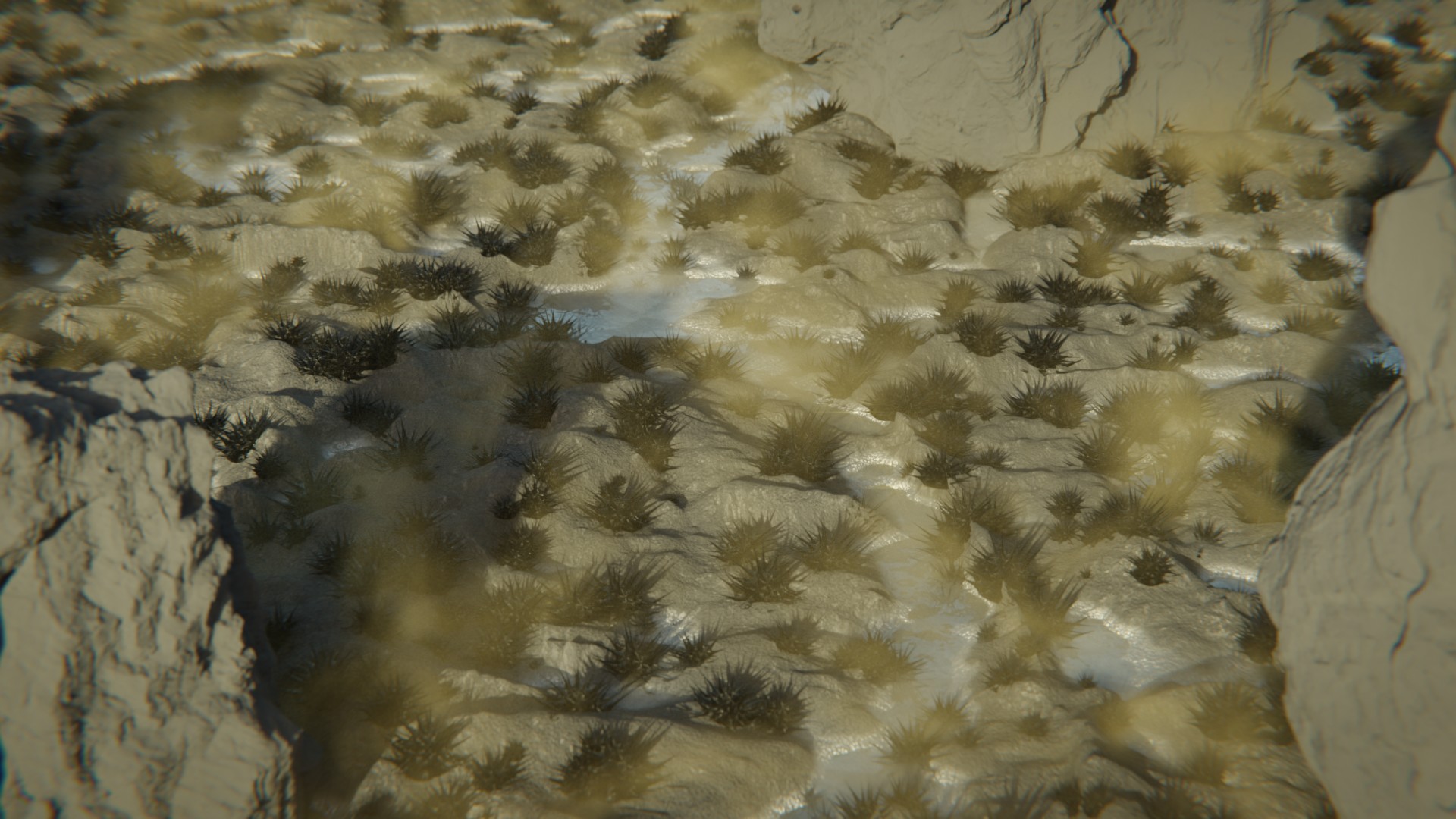Lava Grass
The slopes of Niylan are harsh places that are toxic to nearly all organisms. Clouds of sulfurous gasses cling to the landscape, and the ground is mostly just hard basalt formed from recently cooled lava flows. Even here though there is some life. Spikey black growths glint in the sunlight growing slowly against the odds. Pictured here a stand of lava grass slowly growing on a laval field after an overnight rainfall. The rain puddles are quickly evaporating into a low cloud of fog as sulfur gas clouds linger over the area. [creature design by Dapper Dino]
Basic Information
Anatomy
The main body of an individual lava grass is a lump of irregular tissue which is used primarily to store water, which is scarce in its environment, because while Niylan gets plenty of rain, it evaporates quickly. Sprouting from this are a number of sharp angular spines each of which has a a small amount of curvature seemingly at random. These absorb radiation from recently cooled lava, but also from the tropical sun. These spines are also the reproductive structures of lava grass. The body itself incorporates silicates and iron as part of its structure and as a result the spines are sharp and brittle, additionally the dark color allows the lava grass to absorb a broad spectrum of solar radiation which then can power some of its metabolic activity via the photoelectric effect. The main body excretes waste from pores at the margin of the bottom of the organism which serve to help anchor it to the substrate. In the middle of the bottom of the organism is a soft bit of tissue that exudes acids that eat away at the substrate so that those minerals can be incorporated into the lava grass' body.
Genetics and Reproduction
As a stand of lava grass ages it will shed its larger spines, these are generally fairly light and will tend to blow at least a few meters in the wind and are capable of growing a new organism. At the base of each spine is a cluster of pluripotent stem cells which also undergo a process analogous to the first steps of meiosis, in which their genetic material is shuffled around to prevent each new stand from being simply a clone of its parent. When the new lava grass stand grows it will be a chimera with different parts of its body descended from different lines of these stem cells, but as a matter of statistics some of them will come to dominate the new organisms pluripotent stem cells at the base of each spine, and that lineage will be the dominant source of genetics for that organisms descendants.
Growth Rate & Stages
Lava grass grows slowly, which in a land as barren as Niylan isn't too much of a problem. A new stand starting from a spine will take about a local year to grow a central bulb. About another year and it will have a nice collection of spines, and about a year after that it will start shedding spines.
Ecology and Habitats
Lava grass lives on freshly cooled lava flows where it can get plenty of radiation.
Dietary Needs and Habits
Lava grass get their energy from a combination of ionizing radiation in the form of beta and alpha particles as well as solar radiation, it gains the chemicals it needs from the substrate, the air, and what rain falls on and around them.
Additional Information
Geographic Origin and Distribution
Lava grass are restricted to recently cooled lava flows on Niylan.
EXTINCT
Genetic Ancestor(s)
Scientific Name
Novaculagramen niylanensis
Origin/Ancestry
Radiotropha
Lifespan
5 local years
Average Height
5 cm
Geographic Distribution
Remove these ads. Join the Worldbuilders Guild











Comments